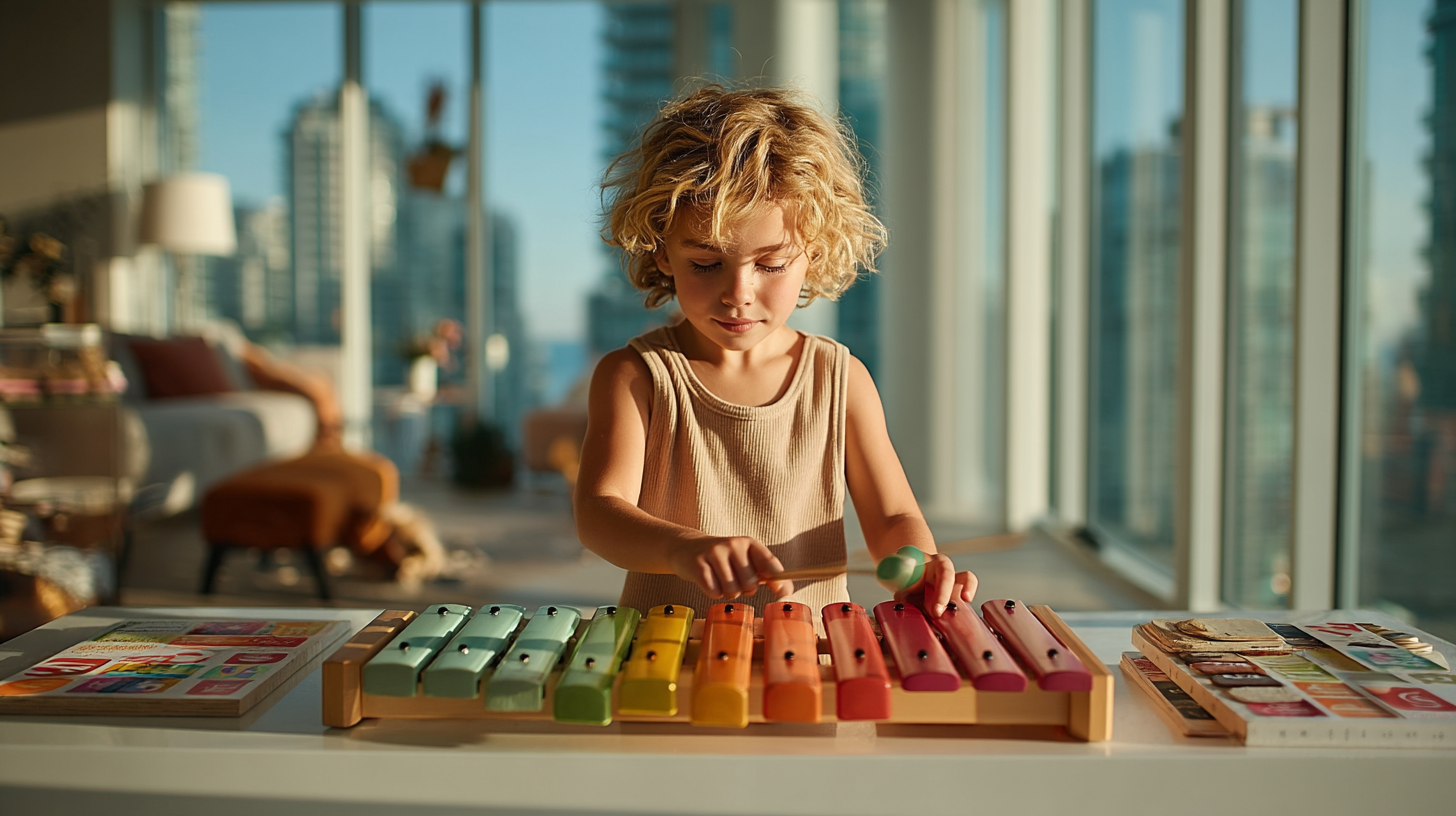Boost Early Math Skills Through Music | Fun and Proven Learning Strategies for Kids

“Can we sing the counting song again?” My 4-year-old’s eager request stopped me in my tracks last Tuesday morning. As a former high school math teacher now raising a first-grader and preschooler, I’d always understood the connection between music and math, but I never realized how transformative it could be until I saw it working in my own home.
What started as simple car ride entertainment has become our most powerful math learning through music strategy. My children now tackle complex mathematical concepts through rhythm and melody, making abstract ideas concrete and memorable in ways traditional worksheets never could.
The beautiful discovery I’ve made is that music for early math doesn’t require formal training or expensive instruments. It just needs enthusiasm, creativity, and the willingness to turn everyday moments into mathematical adventures through sound.
Here’s exactly how I’ve transformed our daily routines into engaging learning experiences that make math feel like the most natural thing in the world.

1. Rhythm-Based Counting Activities
Musical counting games create the strongest foundation for number sense development I’ve ever witnessed. We begin each morning with our “counting clap” ritual, where my children maintain steady beats while counting from 1 to 20. This simple activity builds both mathematical and musical awareness simultaneously.
Skip counting transforms into pure joy when set to familiar melodies. We sing counting by twos to “Twinkle, Twinkle, Little Star” and counting by fives to “Mary Had a Little Lamb.” The rhythmic patterns in math help children internalize number relationships more effectively than any traditional drilling method.
The rhythm acts as a memory anchor that makes mathematical sequences stick. When my first-grader struggles with number patterns during homework, I simply start humming our counting songs, and the answers flow naturally from her musical memory.

2. Musical Pattern Recognition Games
Sound patterns for math learning unlock logical thinking in remarkable ways. We create ABAB rhythmic sequences using different sounds—clap, stomp, clap, stomp—then challenge the children to identify and continue the patterns. This builds the same cognitive skills needed for recognizing number sequences and algebraic relationships.
Melody patterns work beautifully for developing mathematical reasoning. I sing “high, low, high, low” using different pitches while my children predict what comes next. These exercises strengthen pattern recognition abilities that transfer directly to geometry, number sequences, and problem-solving skills.
Using simple instruments amplifies pattern learning exponentially. Kitchen pots, wooden spoons, and homemade shakers create sound patterns children can see, hear, and feel simultaneously. This multi-sensory approach develops pattern recognition more effectively than visual exercises alone.

3. Songs That Teach Math Concepts
Educational math songs transform abstract concepts into concrete, memorable experiences. We’ve created melodies for addition (“Two little birds plus three little birds makes five birds singing”), subtraction (“Five little cookies on a plate, we ate two, now there are three”), and basic geometry concepts.
Shape songs for kids work particularly well for young learners developing spatial awareness. We march around singing about circles having “no corners, perfectly round,” while squares have “four equal sides that meet at right angles.” The combination of movement, melody, and mathematical vocabulary creates lasting understanding.
Time concepts become manageable through musical math activities. We sing about days of the week, months of the year, and clock times. The rhythmic repetition makes sequential concepts stick in ways that traditional calendar time rarely achieves.

4. Instrument-Based Math Exploration
Simple music activities for early math using basic instruments open incredible learning opportunities. Counting drumbeats develops one-to-one correspondence while playing scales introduces sequential thinking and ordinal number concepts naturally.
Fractions through music become intuitive rather than abstract. A whole note receives four beats, half notes get two beats, and quarter notes get one beat each. My first-grader understands these fractional relationships through musical experience, building solid foundations for formal fraction work later.
Measurement concepts emerge organically through instrument exploration. We compare rhythm stick lengths, arrange bells from lowest to highest pitch, and discuss how bigger drums produce lower sounds. These hands-on experiences develop measurement vocabulary and comparative thinking skills.

5. Movement and Dance for Math
Math through movement and music reaches its peak effectiveness when children use their entire bodies to explore mathematical concepts. We act out addition problems by having different groups dance together, then count totals. Subtraction becomes a game where dancers “fly away” or “march off to sleep.”
Geometric shapes come alive through musical movement activities. Children form circles by holding hands, create triangles with their bodies, and march in square patterns around our living room. Physical experience of mathematical concepts creates understanding that surpasses any worksheet learning.
Spatial reasoning through music develops beautifully during movement activities. We practice “over, under, around, and through” concepts while moving to different songs. These directional concepts form crucial foundations for later geometry and algebraic thinking.

“Lasting Benefits of Musical Math Learning”
The benefits of music for math learning extend far beyond our daily activities and create lasting cognitive advantages. Research consistently demonstrates that children engaging in musical mathematical learning develop stronger number sense, improved pattern recognition, and enhanced problem-solving abilities compared to traditional instruction alone.
Musical math learning builds confidence in ways conventional mathematics instruction often cannot. When children succeed at musical math activities, they develop positive emotional associations with mathematical thinking. This foundation supports academic growth throughout their entire educational journey.
Most importantly, this approach makes learning joyful and naturally memorable. My children request math activities because they’re disguised as music and play. They develop crucial cognitive skills without realizing they’re engaging in academic work.
The mathematical concepts they explore through music demonstrate remarkable staying power. Weeks later, I hear my 4-year-old humming addition songs while building with blocks, naturally reinforcing his learning through spontaneous repetition and application.
Musical math learning creates a symphony of understanding that resonates through every aspect of their mathematical development, building both competence and confidence that will serve them throughout their lives.
“When we sing our numbers and dance our patterns, we’re not just learning math—we’re creating melodies of understanding that will echo through their entire educational symphony.”